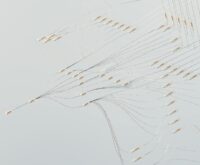The Brains Behind the Buzz: A No-Nonsense Guide to Understanding Neural Networks
You hear the terms all the time. Artificial intelligence. Machine learning. Deep learning. They’re behind the Netflix shows recommended to you, the spam filter that keeps your inbox sane, and the magic that lets your phone recognize your face. At the heart of so many of these breakthroughs is a concept inspired by our own biology: the neural network. But what is it, really? It sounds complicated, futuristic, and maybe a little intimidating. The good news? It doesn’t have to be. The goal of this guide is simple: understanding neural networks without needing a Ph.D. in mathematics. We’re going to pull back the curtain and see that it’s not magic, but a beautiful and surprisingly intuitive process.
Key Takeaways
- A neural network is a computing system inspired by the human brain, designed to recognize patterns in data.
- It’s built from layers of interconnected nodes, or “neurons,” including an input layer, one or more hidden layers, and an output layer.
- Networks “learn” by processing examples, making guesses, measuring their errors, and then adjusting their internal parameters (weights and biases) to become more accurate. This training process is often done via backpropagation.
- Different types of neural networks, like CNNs and RNNs, are specialized for specific tasks like image recognition and language processing.
So, What Exactly *Is* a Neural Network? The Core Idea
Let’s start with the classic analogy: the human brain. Your brain is made of billions of cells called neurons, all connected in a vast, intricate web. They pass signals to each other to help you think, learn, and recognize a cat when you see one. An Artificial Neural Network (ANN) is a mathematical model that tries to mimic this structure and function. It’s a system of interconnected “neurons” that exchange messages between them.
But let’s be clear. It’s an inspiration, not a replication. A neural network isn’t a brain in a box. It’s a powerful tool for finding patterns that are too complex for a human programmer to define explicitly. You can’t write a set of `if-then` rules to identify a cat in a photo. What if it’s upside down? Or only its tail is showing? The lighting is weird? It’s impossible. Instead of writing rules, we show a neural network thousands of cat pictures and let it figure out the “cat-ness” patterns for itself. That’s the core idea.
Breaking Down the Building Blocks: Neurons, Layers, and More
To really get it, we need to look at the components. It’s like learning the parts of a car engine. You don’t need to be a mechanic, but knowing what a piston and a spark plug do helps you understand how the car moves.
The Humble Neuron (or Node)
The fundamental unit of a neural network is the neuron, also called a node. It’s a tiny little computational unit. Think of it as a very simple decision-maker. It does three things:
- It receives inputs. A neuron gets signals from other neurons (or from the initial data). Each of these inputs has a “weight” associated with it. The weight is just a number that signifies the importance of that input. A high weight means the signal is strong and influential; a low weight means it’s less important.
- It processes the inputs. The neuron takes all its inputs, multiplies them by their weights, and sums them up. It then adds another special number called a “bias.” The bias is like a thumb on the scale, making it easier or harder for the neuron to activate.
- It produces an output. The final sum is passed through something called an “activation function,” which decides the neuron’s output signal. Should it fire? And how strongly?
That’s it. A single neuron is pretty dumb. But when you connect thousands or millions of them together, something amazing happens.
Layers: Organizing the Chaos
Neurons aren’t just a jumbled mess; they’re organized into layers. Any network you encounter will have at least three types of layers:
- The Input Layer: This is the front door. It takes in your raw data. If you’re analyzing a 28×28 pixel image, your input layer might have 784 neurons, one for each pixel’s brightness value.
- The Hidden Layer(s): This is where the real thinking happens. These layers sit between the input and output. Each neuron in a hidden layer takes inputs from the previous layer and passes its output to the next. It’s in these layers that the network identifies progressively more complex features. The first hidden layer might learn to recognize simple edges and colors. The next might combine those to find shapes like eyes and ears. The next combines *those* to recognize a cat’s face.
- The Output Layer: This is the final result. It produces the network’s answer. For a cat vs. dog classifier, the output layer might have two neurons: one for “cat probability” and one for “dog probability.”
When you hear the term “deep learning,” it just means a neural network with many hidden layers (sometimes hundreds!). More layers allow the network to learn much more complex patterns from the data.

The Activation Function: To Fire or Not to Fire?
The last piece of the neuron puzzle is the activation function. After a neuron sums up its weighted inputs and adds the bias, it has a number. But what does that number mean? The activation function translates this number into a meaningful output. It acts as a gatekeeper, deciding if and how strongly the neuron should “fire.”
Early on, this was a simple step function: if the number is above a certain threshold, output 1 (fire!), if not, output 0 (don’t fire!). It was very binary. Modern networks use more nuanced functions. A popular one is called ReLU (Rectified Linear Unit). It’s incredibly simple: if the input is positive, it passes that number along. If it’s negative, it outputs zero. It’s like a valve that only allows positive signals through. Others, like the Sigmoid function, squash any number into a range between 0 and 1, which is perfect for representing a probability in the output layer.
How a Neural Network Learns: The Magic of Training
Okay, so we have this structure of neurons and layers. But how does it go from a random collection of connections to something that can identify a cat? It learns. And the learning process, called training, is the most crucial part of understanding neural networks.
It All Starts with Data
You can’t learn without study materials. For a neural network, that material is data. Lots and lots of it. For our cat classifier, we need a massive dataset of images, each one labeled by a human as either “cat” or “not a cat.” This is called supervised learning because we’re supervising the network by giving it the correct answers to learn from.
The Forward Pass: Making a Guess
The training process starts with a guess. We take a single image from our dataset—let’s say it’s a picture of a cat. We feed its pixel values into the input layer. The network’s weights and biases are all initialized with random numbers. The signal from the image flows forward through the network, from layer to layer, with each neuron doing its little calculation. Finally, the output layer spits out an answer, maybe something like “40% chance of cat, 60% chance of not cat.”
That’s a terrible guess! We know it’s a cat. This is where the learning begins.
Backpropagation and Gradient Descent: Learning from Mistakes
Since we have the correct label (“cat,” which we can represent as 100%), we can compare the network’s prediction (40%) to the truth (100%). We calculate the difference, or the “error.” The network was very wrong. The key question is: who is to blame for this error?
This is where the magic of backpropagation comes in. It’s a clever algorithm that works backward from the error at the output layer all the way to the input layer. It calculates how much each individual weight and bias in the entire network contributed to the final error. Think of it like a corporate investigation. The CEO (the output layer) sees a huge financial loss (the error). He goes to his managers (the last hidden layer) and asks, “How much did your department contribute to this loss?” They, in turn, go to their team leads (the layer before them), and so on, all the way down to the interns (the first hidden layer). Everyone gets assigned a tiny bit of the blame.
Once we know how much each weight is to blame, we can fix it. This is where gradient descent comes in. It’s just a fancy term for “figure out which way is down and take a small step.” For each weight, we know which direction to nudge it (increase or decrease) to reduce the error. So, we adjust every single weight and bias in the network just a tiny bit in the right direction. It’s like thousands of tiny knobs being turned simultaneously to tune the network.
Then, we repeat the process. We take the next image, do another forward pass, calculate the error, backpropagate the blame, and adjust the weights again. We do this millions of times, with thousands of images. With each cycle, the network’s predictions get a little bit better. Its error gets a little bit smaller. Over time, the network learns the complex combination of weights and biases that correctly identifies the features of a cat. It’s not memorizing the images; it’s learning the underlying patterns of what makes a cat a cat.
A Quick Look at Different Types of Neural Networks
Not all problems are the same, so we don’t use the same type of network for everything. While they all share the core concepts we’ve discussed, different architectures are specialized for different tasks.
Feedforward Neural Networks (FNNs)
This is the plain vanilla version we’ve been describing. Information flows in one direction only: from input, through the hidden layers, to the output. They are great for many general-purpose tasks like classifying tabular data or basic predictions.
Convolutional Neural Networks (CNNs)
These are the rockstars of computer vision. When it comes to images, CNNs are king. They use a special type of layer called a “convolutional layer” that acts like a set of feature-detecting filters. One filter might slide over the image looking for vertical edges, another for horizontal edges, and another for a specific color. By stacking these layers, a CNN can learn a hierarchy of features—from simple edges to complex objects like faces. This is what powers image recognition on your phone and in self-driving cars.

Recurrent Neural Networks (RNNs)
What about data that comes in a sequence, where order matters? Think about a sentence, a stock price over time, or a piece of music. An FNN would treat each word or data point in isolation. RNNs are designed to handle sequences by having a form of “memory.” The output of a neuron is fed back into itself for the next step in the sequence. This allows the network to remember previous information to inform the present. When you type on your phone and it suggests the next word, that’s likely an RNN (or its more advanced cousins, LSTMs and GRUs) at work.
Real-World Magic: Where Are Neural Networks Hiding?
The applications are everywhere, often hidden in plain sight:
- Recommendation Engines: When Netflix or Spotify suggests what you might like next, they’re using a neural network that has learned your tastes based on your viewing/listening history and comparing it to millions of other users.
- Natural Language Processing (NLP): Voice assistants like Siri and Alexa use RNNs to understand your spoken commands. Google Translate uses complex neural networks to translate sentences, not just words.
- Healthcare: CNNs are becoming incredibly good at analyzing medical images like X-rays and MRIs, sometimes spotting tumors or diseases with accuracy that rivals human radiologists.
- Spam Filtering: Your email service uses a network to analyze the text and metadata of an incoming email to predict whether it’s junk or not.
Conclusion
Hopefully, the world of neural networks feels a little less mysterious now. At their core, they are pattern-matching machines. They are not conscious or magical. They are elegant mathematical systems that, through a process of trial and error on a massive scale, learn to perform tasks that were once thought to require human intelligence. From the simple concept of a neuron making a decision to the complex dance of backpropagation, understanding neural networks is about understanding a new way of solving problems—not by giving the computer rules, but by letting it learn from experience. And that is a truly revolutionary idea.
Frequently Asked Questions (FAQ)
What’s the difference between AI, Machine Learning, and Deep Learning?
Think of them as Russian nesting dolls. Artificial Intelligence (AI) is the biggest doll, the broad concept of making machines intelligent. Machine Learning (ML) is a smaller doll inside AI; it’s a specific approach to AI where machines learn from data without being explicitly programmed. Deep Learning is an even smaller doll inside ML; it’s a specific *type* of machine learning that uses deep neural networks (with many hidden layers) to solve problems.
Do I need to be a math genius to understand neural networks?
Absolutely not! To have a strong conceptual understanding—which is all most people need—you don’t need advanced math. The analogies we’ve used, like learning from mistakes or blaming different components for an error, are enough to grasp the core ideas. To actually *build* and *implement* these networks from scratch, you would need knowledge of linear algebra, calculus, and probability. But to understand what they are and what they do? Not at all. There are many fantastic tools and libraries that handle the heavy math for you.



 The Future of AI: What’s Next for Artificial Intelligence?
The Future of AI: What’s Next for Artificial Intelligence?  Ethical Concerns of AI: Bias, Privacy, and Our Future
Ethical Concerns of AI: Bias, Privacy, and Our Future  AI and Automation: How It’s Changing Everything
AI and Automation: How It’s Changing Everything  AI for Small Businesses: Your Ultimate Guide to Growth
AI for Small Businesses: Your Ultimate Guide to Growth  AI Tools for Freelancers: Boost Your Productivity Now
AI Tools for Freelancers: Boost Your Productivity Now  AI and Big Data: The Ultimate Power Couple Explained
AI and Big Data: The Ultimate Power Couple Explained  DeFi’s Hurdles: Security, Scalability & Regulation
DeFi’s Hurdles: Security, Scalability & Regulation  How to Read a Crypto Whitepaper: A Beginner’s Guide
How to Read a Crypto Whitepaper: A Beginner’s Guide  Find Undervalued NFT Projects: A Complete Guide
Find Undervalued NFT Projects: A Complete Guide  Blockchain Consensus Mechanisms Explained (PoW vs. PoS)
Blockchain Consensus Mechanisms Explained (PoW vs. PoS)  NFTs & Music: Empowering Artists in the Digital Age
NFTs & Music: Empowering Artists in the Digital Age  Trader’s Psychology: Master Fear & Greed in Markets
Trader’s Psychology: Master Fear & Greed in Markets